Ynys-y-Picca – 985 on the 1841 Tithe Map.
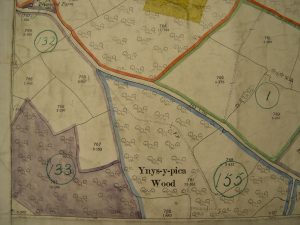 The first mention I can find is in 1780 when William Williams was the constable for Iniss y pike. His name appears again in 1797 as having land for the late Jenkin Daniel.
The first mention I can find is in 1780 when William Williams was the constable for Iniss y pike. His name appears again in 1797 as having land for the late Jenkin Daniel.
David Phillips of Crumlin is the owner in 1798. In 1815 Jane Phillips aged 74 of Ynys y pwcca died and was buried in St Peter’s churchyard.
A new name is mentioned in 1816, Elizabeth Jenkins, the owner still being David Phillips, Elizabeth paying 10/- land tax in 1828, but by now the owner of Ynys-y-picca is Thomas Phillips (son of David?)
The next mention I can find is on the 2nd June 1835 when John Jones aged 72 of Ynys-y-picca is buried at St Peter’s Churchyard.
By 1839 Thomas Watts and his family from Monkswood have moved to Ynys-y-picca and in 1841 Thomas paid the rector £3 12s tithe, the owner is still Thomas Phillips. On the 1841 census Thomas Watts is aged 35, a farmer, his wife Mary, is also 35, their children are Ann 15, Martha 12, Thomas 10, Joseph 6, and Mary 1.
Joseph Watts was baptised, aged 9, on the 21st May 1843 at St Peter’s church.
On the 31st October 1846 a fight occurred between Thomas Watts and Thomas Morris (my 5 x great uncle) outside the Royal Oak, apparently over cheating whilst playing cards. Thomas Morris died of a ruptured bladder and Thomas Watts was indicted for the “killing and slaying of Thomas Morris.” The case was heard at Monmouth assizes but Thomas Watts was not convicted of any offence.
On the 1851 census for Henes u Picha, Thomas Watts is aged 53, a farmer of 40 acres, born Goytrey, Mary his wife is 56 born in Monkswood, living with them are their children Ann 24; Martha 22, a dressmaker; Mary 11; Thomas 19, a farm labourer; Elijah 8, and a farm servant Walter Jenkins aged 17.
In 1856 Thomas Watts purchased from the Earl of Abergavenny vast quantities of Elm and Oak trees at a cost of £19 2s for the Elm and £171 18s for the Oak.
Thomas Watts (the younger) was put on bail in March 1857 for stealing £6 2s 0d from John Roberts of Goytrey. (John Roberts was the son of James Roberts of Lower Cae Coed, Goytrey.)
The rateable value of Ynys-y-picca in 1860 was £13 10s, the same year Thomas Watts voted for Thomas Jenkins to be the new highways assessor, Thomas Jenkins winning the vote.
Thomas Watts died in 1861 aged 65 and was buried at St Peter’s on December 22nd.
On the 25th July 1862 Thomas Watts the younger was fined for obstructing the highway.
On the 21st August 1866 Thomas Watts was caught stealing 5lbs of veal from John Richardson, a butcher in Usk, even though he had £65s 1d on his person. He was committed for trial at the next quarter sessions where he was found guilty but recommended to mercy as he was in drink at the time of the offence and also as he was supporting his mother. He was sentenced to one month’s imprisonment.
The following year, 1867, Thomas Watts took a court case against Thomas Jeremiah for the purchase of chains, this case was dismissed.
The 1871 census gives Mary Watts as aged 68, a widow and head of the household, Ann is 43 and unmarried, living with them is a grand-daughter Emma Mary aged 7 and a 41 year old servant William Forty.
(Mary Watts died in 1883 aged 83, she was living at Penpederhoel.)
In 1880 Ynys-y-picca had a new occupier, the Edgar family. Lewis Edmund wrote in his diary in this year that he was at Mrs Watts, looking at repairing of the house and the cottage for David Phillips.
The 1881 census says Alexander Edgar is aged 41, born in Llangibby and a farmer of 35a, Mary his wife is 40 and born in Goytre, (Mary is Mary Watts) their children are Thomas 12, Edwin 9, Sydney 6, and Joseph 4.
On the 20th August 1881 Alexander Edgar was prosecuted for cruelty to a horse by working it in an unfit state, the horse had a fore-foot badly swollen and a sand crack in its foot. Fined 10/-
The next ten years seemed quite uneventful, Alexander Edgar said in the 1891 census that he was born in Llanhenoc and was 60 years old, Mary his wife was 50, Sidney was 16, Joseph 14 and with them is 19 year old Alice Cam, a servant.
Edwin Alexander was summoned for not maintaining his father in 1899. He said he owned 20 acres of land in Goytrey, he was ordered by the court to pay 1s a week. On the 25th May the same year Alexander Edgar was sent to Pontypool Union then removed to Abergavenny asylum. The reason stated “as an imbecile.”
In June 1899 Mary Edgar was fined for not having a dog license, she pleaded guilty and was fined 5s.
In 1901 on the census, Edwin Edgar was aged 30, born in Mamhilad, his wife Sarah was 28 and born in Ferndale. In 1905 Edwin Edgar purchased Plough Cottages and in 1910 was given an order by the court to repair them.
In 1911 Edwin Edgar said he was aged 41, a farmer, born Goytrey, Sarah Ann his wife was 40, they had been married 9 years had 2 children only 1 was alive.
There was a court case held in Pontypool in April 1920 between John Guppy, a milk vendor from Monkswood and Edwin Edgar, over John Guppy’s horse that went missing overnight and was found in Edgar’s field. Edwin Edgar would not release the horse until John Guppy paid 8s 6d damages, the court found for Edwin Edgar the sum of 2s 6d for damage caused by the horse.
Edwin Edgar found himself in court once more in July 1920 for allowing a bull at large in a field where there was public access. Fined 20s.
In June 1925 Edwin Edgar sued Philip Williams for £8 3s 4d for damages to his property, Brook Cottage, claiming he had damaged it during his occupation, the judge said it was “a most trivial and trumpery claim.”
Again in June 1925 Edwin Edgar sued Joseph Greening of Helmaen Cottage, Llanbadoc, for £5 damages caused to a meadow by his fowls.
In August 1929 Mrs Edgar applied to the court for possession of 2 cottages called Plough, due to unpaid rent by the occupiers, Pitt and Crozier, permission was granted.
Sarah Ann Edgar died aged 70 in 1943 and Edwin Edgar in 1955.
The sale of 71 acres including Cae Susanna lands, Plough Farm, Ynyspwcca land, wooden bungalow were held at the Goytre Arms on the 31st August 1955.
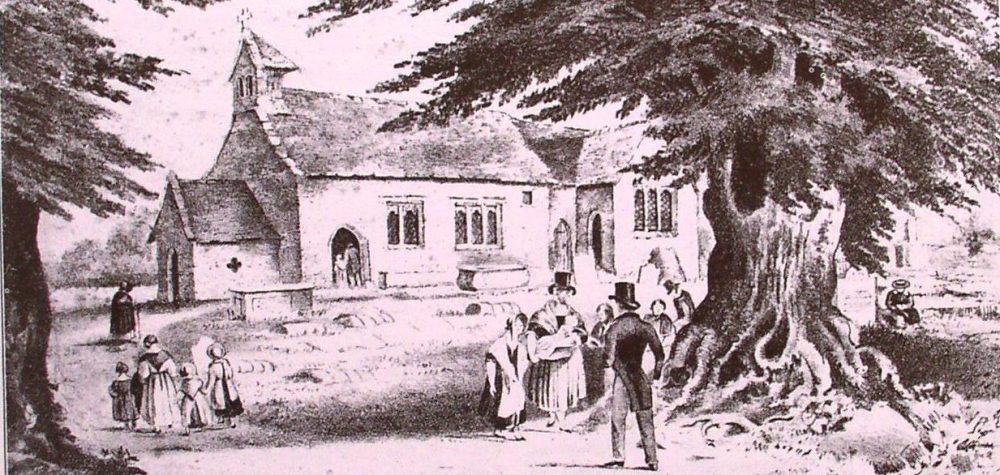

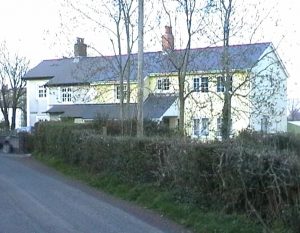 On the 6th February 1860 William Jenkins of Bridge Farm sold to Richard Williams of Llanvihangel, Pontymoile “a piece of orchard land or pound, situate or lying in the parish of Goytre and adjoining 40 perches (more or less) together with two messuages or dwelling houses in course of construction theron, adjoining other part of the orchard belonging to one William Jenkins.”
On the 6th February 1860 William Jenkins of Bridge Farm sold to Richard Williams of Llanvihangel, Pontymoile “a piece of orchard land or pound, situate or lying in the parish of Goytre and adjoining 40 perches (more or less) together with two messuages or dwelling houses in course of construction theron, adjoining other part of the orchard belonging to one William Jenkins.”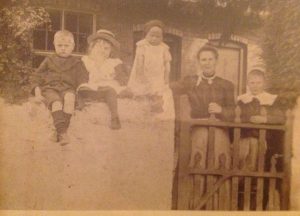
 The first mention I can find is in 1780 when William Williams was the constable for Iniss y pike. His name appears again in 1797 as having land for the late Jenkin Daniel.
The first mention I can find is in 1780 when William Williams was the constable for Iniss y pike. His name appears again in 1797 as having land for the late Jenkin Daniel.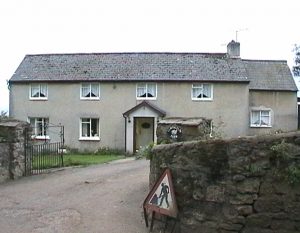 Loyncelin – Llwyn Celin – 311 on the
Loyncelin – Llwyn Celin – 311 on the 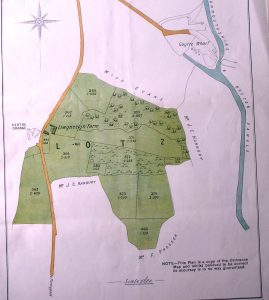
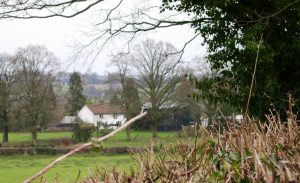 A marriage took place on the 6th April 1767 between William Prosser bach and Judith Morgan at Mamhilad church, after the wedding they lived at Gelli. They had several children, James baptised in December 1769; William in February 1771; Edward July 1774; Thomas 1776; Philip December 1779, and Richard May 1782.
A marriage took place on the 6th April 1767 between William Prosser bach and Judith Morgan at Mamhilad church, after the wedding they lived at Gelli. They had several children, James baptised in December 1769; William in February 1771; Edward July 1774; Thomas 1776; Philip December 1779, and Richard May 1782.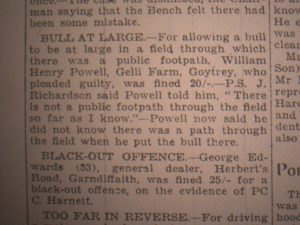 In November 1943 Mr Wm Powell of the Gelli was fined for allowing a bull to roam in a field with a public right of way and fined 20s
In November 1943 Mr Wm Powell of the Gelli was fined for allowing a bull to roam in a field with a public right of way and fined 20s The original owner was the Earl of Abergavenny
The original owner was the Earl of Abergavenny The 1798 land tax says John Hughes is the owner and William Phillips is the occupier and the parish records until 1801 also say the same.
The 1798 land tax says John Hughes is the owner and William Phillips is the occupier and the parish records until 1801 also say the same. At the spring assizes in 1859 is a court case Seamark v Williams, declarations are given by Richard Pruett and William Plaisted.
At the spring assizes in 1859 is a court case Seamark v Williams, declarations are given by Richard Pruett and William Plaisted.